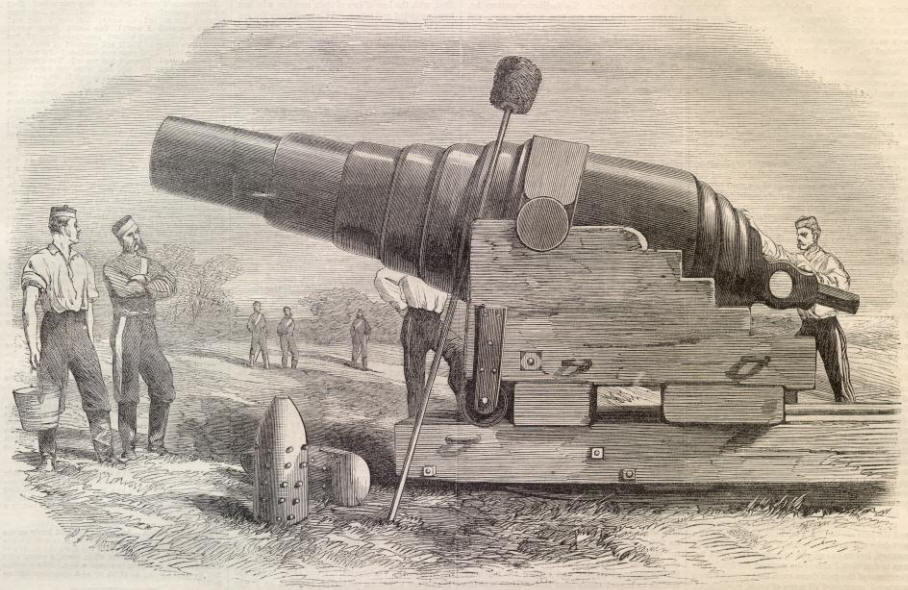 |
| Armstrong Gun |
- The practice of riffling or casting lines inside a cannons barrel, as it gave the cannon gyroscopic stability which improved accuracy(Ruffell). One model known as the Armstrong Gun was one of the earliest riffled cannons. They shot either shots (solid projectiles used to penetrate armour) or shells (an explosive projectile). They could break through the ships side and explode on the inside of it increasing damage and casualties. The cannon was firat manufactured in Europe in 1855 by the Elswick Ordnance Company and the Royal Arsenal at Woolwich . Armstrong Guns were used by the British troops during the Taranaki in 1860.
 |
| Canon obusier de 12 |
- Canon obusier de 12 (also known as the 12-pounder napoleon) was developed by France in 1853. It was a smoothbore cannon using either cannon balls, shells, or canisters which made it more versatile.They had a short, tighter barrel (Museumstuff)so the projectile fit well but it still kept its accuracy. The new weapon "revolutionized field artillery". This cannon was mainly used in the United states in the American Civil War. Over 1,100 of these cannons were manufactured by the North, and 600 by the South. At Gettysburg, 142 out of the 360 federal guns used were Napoleons.
Uh... This is BRILLIANT! I cannot believe how much you wrote (and suprised you could find that much information). I love how your blog is set up and think that it is very well done.
ReplyDeleteThis is really good!! lots of good info and great pictures!!! :D
ReplyDeleteI love how your blog is SO easy to read. it doesn't hurt my eyes, and doesnt involve any unnecessary info. Perfect the way it is.
ReplyDelete